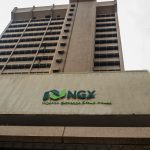
Our manufacturing Purchasing Managers’ Index (PMI), the first of its kind in Nigeria, shows a surge from 52.8 in March to 58.9. Our partner, NOI Polls, has gathered and compiled the data. The index report is a familiar data release at the start of the calendar month in developed markets (such as the ISM’s in the US), the larger emerging markets such as China and a few other frontiers. It is based upon the responses of manufacturers to set questions on core variables in their businesses.
• PMIs are forward-looking indicators of sentiment, and have the proven capacity to move financial markets in developed economies.
• In the unweighted model of our choice (the ISM’s), respondents are asked whether output, employment, new orders, suppliers’ delivery times and stocks of purchases have improved on the previous month, are unchanged or have declined. A headline reading of 50 is neutral. We have posted nine negative readings since our launch in April 2013 including five in 2016.
• Our sample is an accurate blend of large, medium-sized and small companies.
• We have also added “trigger” questions, which apply when the respondent has the same answer on a sub-index for two successive months and then changes it for the third.
• All five sub-indices picked up in April and all were in positive territory. We highlight the reading of 55 for employment, its highest since November 2015.
• Among the answers to the trigger questions, we note a common theme of an improvement in supplies of raw materials, as well as an uptick in demand. The surge in April was led by large companies (with more than 200 employees), which would logically have been the main beneficiaries of the greater availability of inputs.
• Since its circulars of late February the CBN has stepped up its sales of fx to retail (for invisibles) and to importers. One consequence has been naira appreciation on the parallel fx market. We are not sure whether the appreciation has further legs to run but readily acknowledge the impact of the measures on at least part of the manufacturing sector.
• According to our narrative, the economy is emerging from recession. In Q4 2016, the contraction of the economy narrowed from -2.2% y/y the previous quarter to -1.3%, and that of manufacturing from -4.4% y/y to -2.5%. We see token positive GDP growth of 0.2% y/y in Q1 2017.
SOURCE: FBNQUEST- May 2, 2017













